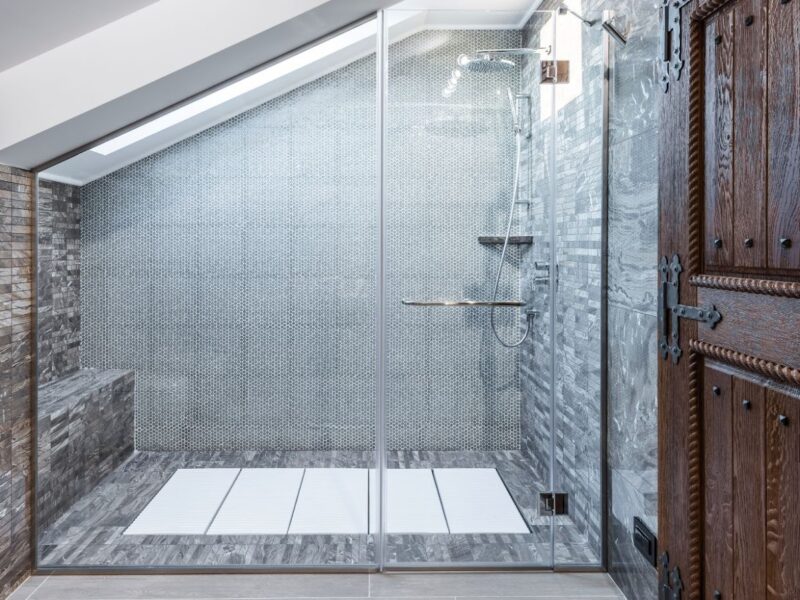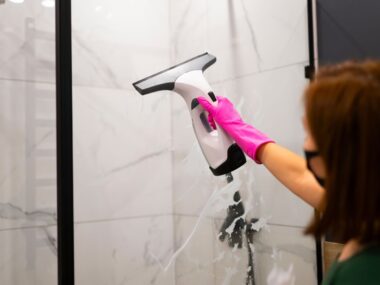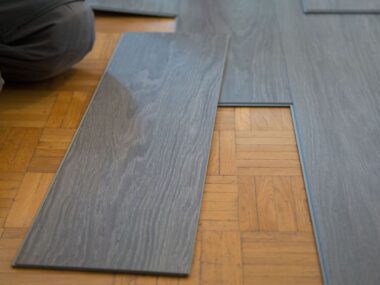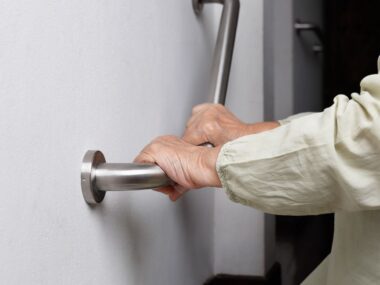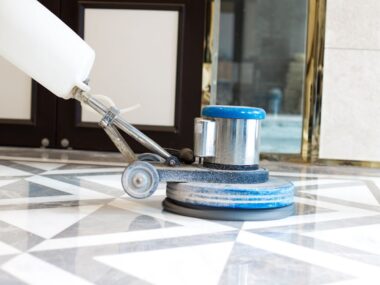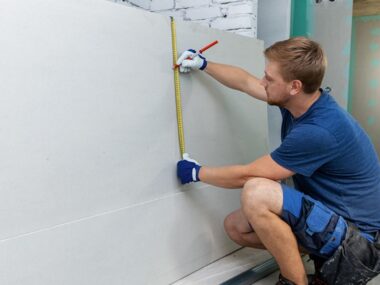A stained textured shower floor is a type of tile or stone surface that adds visual interest and texture to the shower area. These types of surfaces can be installed in a number of different ways, including using stencils to create patterns and textures on the surface, adding dye to pieces of stone or tile to achieve similar results, or even using a special grout that can be textured.
The benefits of installing a stained textured shower floor include the following:
- They are unique and add visual interest to the space.
- They can help to disguise imperfections in the surface beneath.
- They can provide added traction to prevent slips and falls.
- They are easy to clean and maintain.
- They can be customized to suit a variety of different styles and preferences.
How to clean stained textured shower floor
The best way to clean a stained textured shower floor is to use a combination of gentle, pH-neutral cleaners and soft bristled brushes or sponges. First, begin by sweeping up any loose debris from the surface with a broom or vacuum. Next, mix your cleaning solution according to the instructions on the bottle, and gently scrub the floor with the brush or sponge. Rinse the area well with clean water, and allow it to air dry completely before using the shower again.
If you have any stubborn stains that refuses to budge, you can try making a paste out of baking soda and water and scrubbing it into the stain with a soft bristled brush.
Types of stains that can occur on a textured shower floor
Include mold and mildew, rust, hard water deposits, and soap scum. To prevent these stains from forming in the first place, be sure to regularly clean your shower floor with a pH-neutral cleaner and rinse it thoroughly after use.
In addition, you can help keep your textured shower floor looking its best by using a shower mat to prevent soapy residue from dripping onto the surface, and by using a squeegee or clean cloth to wipe down the shower walls after every use.
How to remove different types of stains from a textured shower floor
- mold and mildew: Mix equal parts water and white vinegar in a spray bottle and spritz the affected area. Let it sit for several minutes, then scrub with a soft bristled brush. Rinse well with clean water.
- rust: Make a paste out of baking soda and water, and scrub into the stain with a soft bristled brush. Rinse well with clean water.
- hard water deposits: Mix equal parts water and white vinegar in a spray bottle and spritz the affected area. Let it sit for several minutes, then scrub with a soft bristled brush. Rinse well with clean water.
- soap scum: Mix equal parts water and white vinegar in a spray bottle and spritz the affected area. Let it sit for several minutes, then scrub with a soft bristled brush. Rinse well with clean water.
To prevent soap scum from building up in the future, you can wipe down your shower walls after every use using a squeegee or clean cloth to help keep them free from soap residue. You can also try using a shower mat to help keep soap from dripping onto your textured shower floor.
Prevention tips to keep your textured shower floor looking new
Some of the best ways to prevent stains and buildup on your textured shower floor include:
- wiping down your shower walls with a squeegee or clean cloth after every use
- using a shower mat to catch any drips from soap residue
- using a pH-neutral cleaner to remove dirt, mildew, and other deposits from the surface
- regularly scrubbing the floor with a soft bristled brush or sponge to remove any buildup that may have accumulated over time
- using a dehumidifier to reduce excess moisture in the bathroom, which can contribute to the formation of mold and mildew on textured surfaces.
